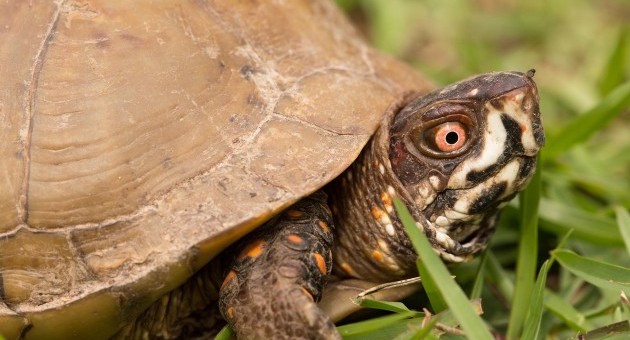Millions of Americans enjoy outdoor activities
The US Fish and Wildlife Service issued preliminary results of its five-year wildlife recreation study that indicated 77 million adults participated in some sort of wildlife-related recreation in 1996 and that wildlife remains "a remarkable engine for economic growth and job creation."
Americans spent $104 billion on hunting, fishing, bird watching. and other outdoor activities associated with wildlife last year, considerably more than the 81 billion we spent on new cars.
"Americans cherish wildlife," said John Rogers, acting director of the FWS. "We like to fish. We like to hunt. We like to take a pair of binoculars out into the woods and simply watch birds and other wild creatures."
More than 39 million American adults either hunted or fished last year and 63 million enjoyed watching wildlife. Forty percent of the adult population enjoyed some form of wildlife recreation.
Fishing is one of the nation's favorite pastimes. Last year, 35.2 million people aged 16 and over - 18 percent of the adult population - spent $38.1 billion to fish their favorite spots. This figure is up from 1991 when 35.6 million anglers spent $27.6 billion. Although the number of fishermen declined slightly over the five-year period, the number of days they fished rose 22 percent to 624 million.
Fourteen million people over the age of 16 hunted in 1996, down slightly from 14.1 million in 1991. The total number of days hunted rose eight percent to 256 million, and expenses rose 47 percent to $20.9 billion. Most hunters - 11.3 million - were after big game. Nearly seven million hunted small game, and three million hunted migratory birds.
The number of wildlife watchers declined 17 percent from 1991-1996 with about 63 million adults watching, feeding, or photographing wildlife last year. However, expenses rose 27 percent to $31 billion. Feeding birds and other wildlife was by far the most popular activity with 54.1 million participants.
The report was compiled by the Census Bureau. The final report will be available in November and state reports will be released in the following months.
Ducks are up!
The number of breeding ducks has reached an all-time high at 42.6 million birds, according to the US Fish and Wildlife Service, an increase attributed to favorable weather conditions and millions of acres of restored and preserved wetlands by FWS acting director John Rogers.
But Rogers cautioned that all is not rosy. "We should, however, keep in mind that these numbers are coming after an unusually long stretch of favorable weather and that we need to press on in our conservation efforts in preparation for another dry cycle," Rogers said. "Most species are currently above the numerical goals of the North American Waterfowl Management Plan, but those goals are based upon average environmental conditions. The four to five years of above-average pond numbers in the survey area is unprecedented. We clearly are experiencing above-average conditions."
The survey estimates numbers of ducks in important breeding areas over 1.3 million square miles of the north central US, western and northern Canada, and Alaska. A second survey area covering the eastern US found that duck breeding populations in the northeastern states and Canada's eastern provinces remained about the same as last year.
"We have come a long way since 1990 when drought, agricultural practices, and predation reduced the breeding population to one of the lowest on record at 25.1 million," Rogers said. "Since then the breeding population has grown by nearly 70 percent."
The North American Waterfowl Management Plan, the conservation reserve and wetland reserve programs in the farm bill, and the wetlands preservation provisions of the farm bill are often credited with huge gains in wetlands in the waterfowl flyways. Hunters and anglers have also contributed millions to the effort through taxes on equipment and donations to conservation groups such as Ducks Unlimited and Trout Unlimited.
 |
Like this article? Don’t forget to share, like or follow us |
 |
NAIA WEEKLY ROUNDUP
FEATURED & LATEST ARTICLES
GET THE NAIA WEEKLY ROUNDUP VIA EMAIL FOR FREE
Stay Connected with The NAIA: Sign Up for The Weekly Roundup
Join our FREE newsletter and community of animal advocates and receive The NAIA Weekly Roundup straight to your inbox. Stay in the loop with the latest news, events, and ways you can make a difference in the lives of animals. Sign up now to stay informed to create positive change!
Sign Up




 A Question of Neglect, A Legendary Primatologist Passes Away, and More!
A Question of Neglect, A Legendary Primatologist Passes Away, and More!
 Shelter Spay Pushback, A Contentious Ostrich Cull, and More!
Shelter Spay Pushback, A Contentious Ostrich Cull, and More!
 Bad Dog Stories, Goodbye Cephalopod, and More!
Bad Dog Stories, Goodbye Cephalopod, and More!
 A Conference Call for You, A Fallen Elephant, and More!
A Conference Call for You, A Fallen Elephant, and More!


